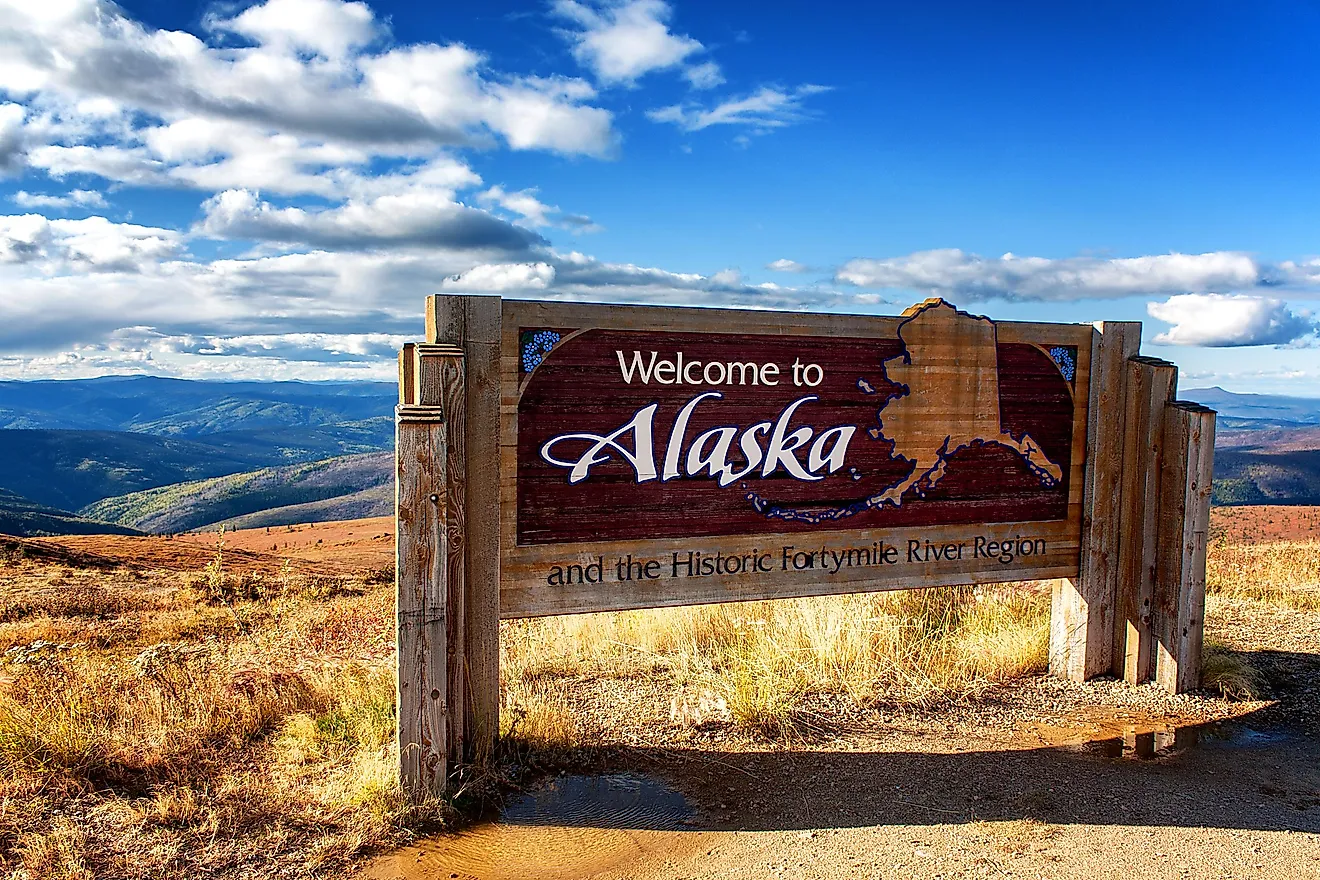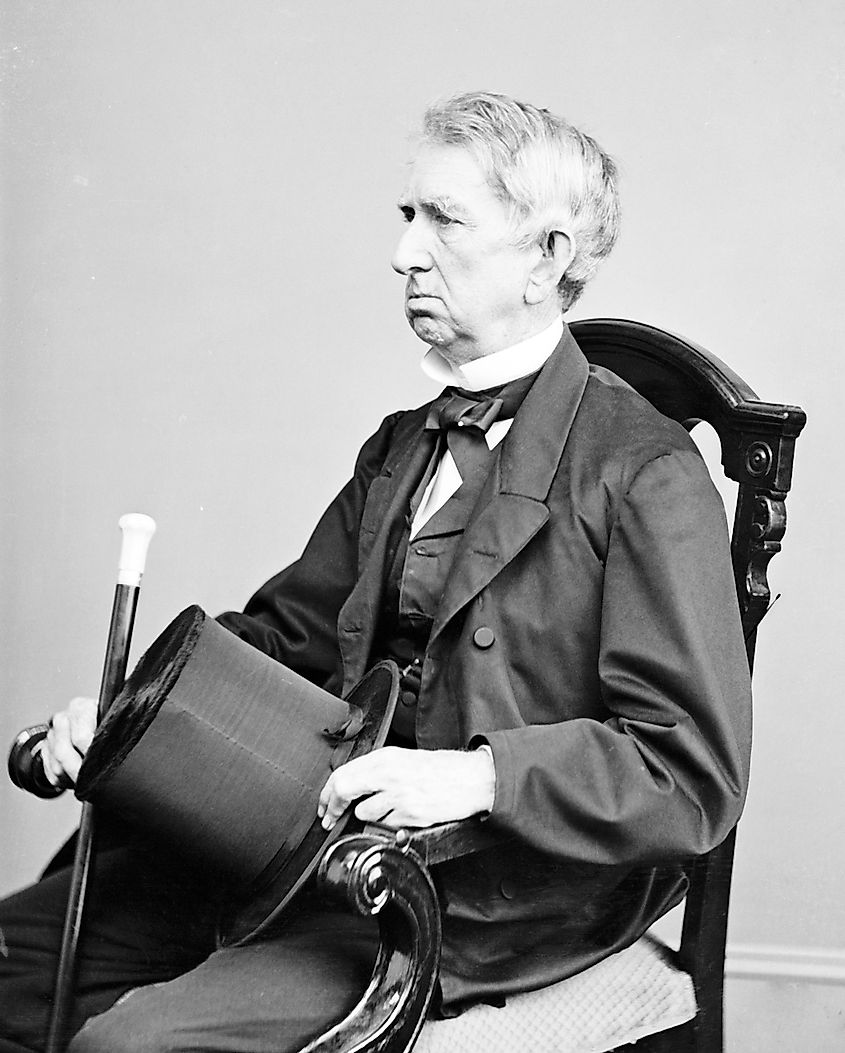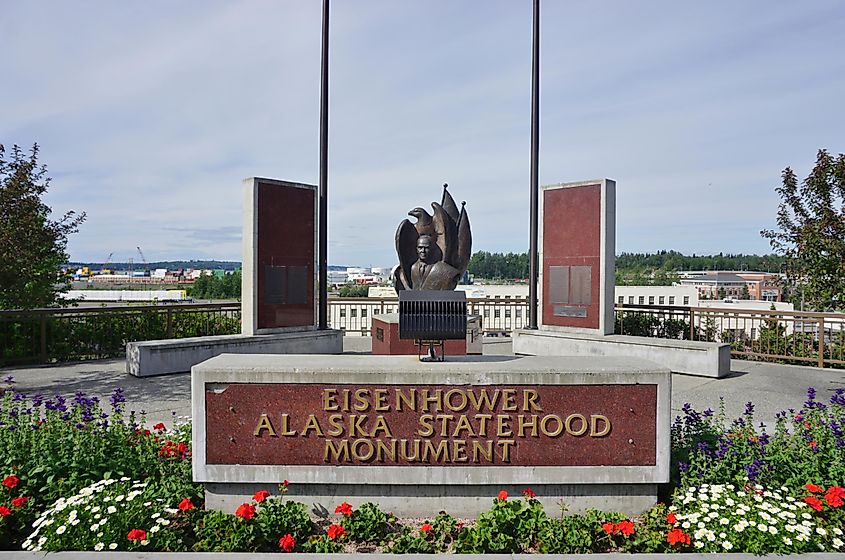When Did Alaska Become A State?

- Alaska's statehood was proclaimed on January 3, 1959, by President Dwight Eisenhower.
- Alaska, the largest state by area, was the 49th state to join the Union.
- The US purchased Alaska from Russia at a cost of 2 cents per hectare or $7.2 million in 1867.
Alaska, located on the extreme northwest of the North American continent, is the largest US state by size, covering an area of approximately 1.7 million square km (665,380 square miles). Despite its vastness, the state is the country’s third-least populous state with only 1.26 people per square mile on average.
As large as Alaska is, it was the 49th state to be admitted to the Union following the signing of a special proclamation by President Dwight Eisenhower on January 3, 1959. However, Alaska's ties to the US began when it became an incorporated territory of the country, effective March 30, 1867, after what has been famously referred to as the “Alaska Purchase.” But, how has Alaska’s journey to statehood been and what influenced its purchase from Russia?
Alaskan Occupation And Settlement
Alaska’s history can be traced back to the pre-colonization period when numerous Indigenous peoples settled in the area. The theory goes, these peoples began settling in Alaska by way of the Bering Land Bridge about 20,000 years ago. Some of the earliest settlers were the Tlingit People, Tsimshian, Haida, and Aleut.
According to several accounts, Russians were the first Europeans to discover Alaska, led by Russian explorer Semyon Dezhnyov in the 17th century. However, it is generally believed that the Russians, led by Danish explorer Vitus Bering, first landed on the shores of Alaska in 1741. Soon after, the Russians made incursions into Alaska, leading to the establishment of the region as a Russian colony in 1784 by Grigory Shelikhov. Grigory later established the Russian-American Company, which later became Alaska’s colonial administration. Russians expanded their settlement throughout Alaska, with the southernmost fort located close to California’s Bodega Bay. The Russian settlers focused on hunting for the fur trade, and they caused the significant decline of Indigenous populations because of killing, overworking, and the introduction of foreign diseases.
Although Russians established settlements in Alaska, they never fully colonized the region, partly because the colony was not profitable. In the 1820s, the British and Americans finally obtained trading rights in Alaska. Russia was not also doing well financially during this period, evidenced by the decline in their activities in the New World. With Russia becoming almost bankrupt in the 1860s, it decided to sell off Alaska to the US.
Alaska Purchase

After the Crimean War (1853-1856), the Russian Empire under Emperor Alexander II realized they could not defend Alaska from being conquered in the future by their main rival, the British. Russia did not wish to have the British as their next-door neighbors just across the Bering Sea. Therefore, the Russian government decided to sell Alaska to the US as a means of keeping away the British. Although the sale was discussed in 1857-1858, no deal was reached as the US considered the Civil War a priority at the time.
In the following years, America entered into serious discussions with Russia over the sale of Alaska. The initial negotiations involved, among others, the Russian diplomat Eduard de Stoeckl and John Appleton, then assistant Secretary of State. Following the US victory in the Civil War, Russia and the US re-entered into fresh negotiations. This time, William H. Seward led the negotiations, which began in March 1867. The negotiations were concluded by the signing of a treaty in the early morning of March 30, 1867. The purchase price was set at two cents per acre or $7.2 million. On October 18, 1867, Alaska was officially transferred, with the lowering of the Russian flag and the raising of the American flag.
American Administration
Immediately after the Alaska Purchase, Alaska became a US military department under the jurisdiction of the US Army (1867-1877), the Department of Treasury (1877-1879), and the US Navy (1879-1884). When Alaska became a Department, it was mainly occupied by Russian citizens. However, the Russians soon decided to go back to their country, with the Russian American Company facilitating their exit.
When the US purchased Alaska, much of the area had not been explored. The effort by the Western Union Expedition and the Alaska Commercial company resulted in Alaska's greater exploration, especially in the last decades of the 19th century. In 1884, the Department of Alaska transitioned to the District of Alaska, following the passage of the first Organic Act.
Around that time, gold was found in different locations across Alaska, and the US population finally realized the true value of this land. Many traveled up to Alaska with the hopes of making money in the gold rush. General Jefferson C. Davis continued to be in charge of the area. In 1898, copper was also found.
In 1912, Alaska was incorporated as an organized territory of the United States.
Statehood And Admission To The Union

Article IV of the US Constitution gives Congress powers to admit new states into the Union. However, it is not the prerogative of the House to initiate the process. It is always upon the organized government of the territory intending to join the union to request statehood. Congress then empowers the government to write a state constitution, which must be passed by the territory’s residents and the Congress. Once the Congress adopts a joint resolution granting statehood to the territory, the president signs the resolution and issues a proclamation to indicate that the new state has officially joined the Union.
When former Alaska district judge James Wickersham joined Congress, one of his priorities was to ensure Alaska became a state. Within four years of Wickersham joining the Congress, the legislatures passed the Second Organic Act (1912), upgrading Alaska from a District to a Territory. Alaska’s push for statehood was further boosted by Edward Lewis Bartlett, who joined Congress as one of the territorial delegates, and the appointment of Ernest Gruening as Alaska’s governor.
In 1946, Alaska passed a referendum in favor of statehood, allowing Lewis to table a bill in Congress. However, the bill was shot down for fear that Alaska was not in a position to raise enough taxes. However, Bartlett did not relent in his push for statehood. In 1956, Alaskans overwhelmingly approved the Alaska Constitution, which was considered one of the best in the US. Two years later, on July 7, 1958, Congress approved Alaska’s statehood. However, it was not until January 3, 1959, that President Eisenhower signed a special proclamation admitting Alaska to the Union. Shortly after (August 21, 1959), Hawaii’s statehood, whose admission to the Union depended on Alaska’s admission, was proclaimed. Alaska became the 49th state to join the Union, then Hawaii the 50th. Despite the long struggle for statehood, there is an independence movement in Alaska, known as the Alaskan Independence Party, supporting a vote on its secession from the Union.











